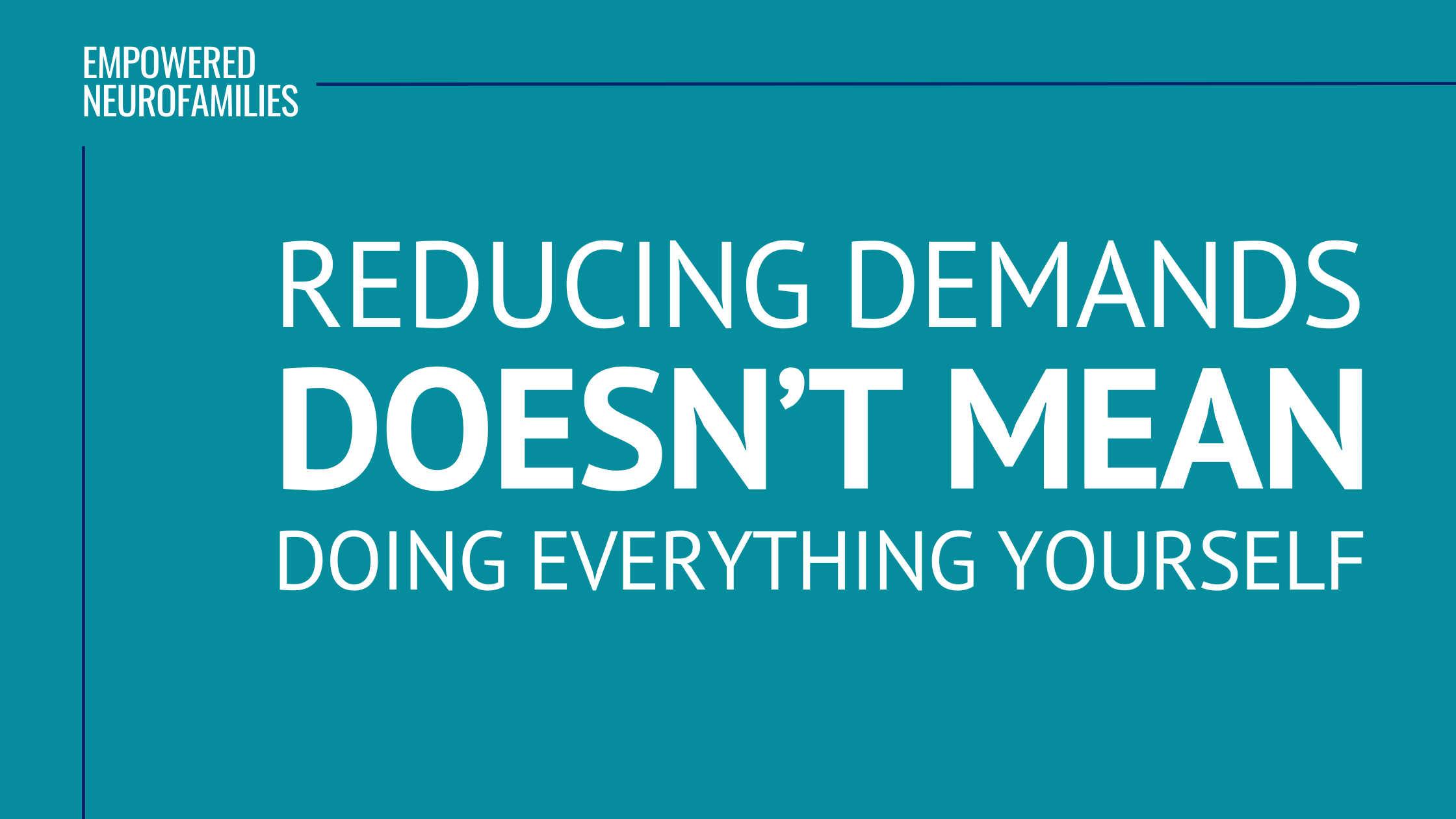Reduce Demands Isn’t About Doing Everything For your child
Let’s clear something up real quick…
Reducing demands doesn’t mean:
Letting your kid run the house.
Doing everything for your kid forever.
Giving up entirely on building life skills.
And it certainly doesn’t mean you’re a “permissive parent”.
Often times parents get nervous about reducing demands because it feels like we’re saying you should do absolutely everything for your child and have zero expectations forever.
But that couldn’t be farther from the truth!
So in the next five minutes or so, I’m going to show you what it really means to reduce demands, how to use reduced demands strategically, and how it actually helps you build life skills and implement boundaries that your neurodivergent child actually follows.
Reduce Demands Isn’t About Doing Everything For Your Child
If we haven’t met yet—hey friend, Kaylene here.
I’m a neurodivergent parent of six, a parent coach for neurofamilies, and the creator of Empowered Neurofamilies, where I help you build a family structure that actually works for your neurodivergent crew.
I talk a lot about reducing demands, especially for kids who get stuck, spiral, or seem to say “no” to everything because sometimes the best way to move forward is to do less.
Let’s dig into what demand reduction really is (and—almost more importantly—what it’s not).
Reducing Demands is About Regulation
When we think about reducing demands as a way for our kids to “get away with” everything, we are missing the real point.
Reducing demands, at it’s core, is about regulation.
Because demands—even sneaky ones like questions, reminders, and suggestions—are perceived by our kids’ nervous system as a direct threat.
We temporarily reduce most demands in order to help our kids feel safe and regulated day-to-day.
Without regulation, our attempts at building skills or holding boundaries simply won’t work.
Reducing Demands is Strategic
While reducing demands can feel like “giving in”, it’s really about being strategic.
It’s strategic in the moment.
When you reduce the demand of a specific wake-up time in order to make sure your child is getting enough sleep.
It’s strategic for behaviors.
When you intentionally reduce demands to help your child feel regulated (and have less meltdowns or big explosive behaviors).
It’s strategic in a season.
When you intentionally reduce demands for a season to get regulated before a season that will inherently more demanding.
(Like reducing demands over summer to have more spoons for back to school!)
Reducing Demands Isn’t About ALL Demands
No matter what, there will be some demands you simply can’t let go of.
I call these necessary demands (creative, I know) and typically they’re things involving safety, consent, or laws.
It’s great to reduce demands, but everyone still needs to wear seatbelts.
And your kid still can’t hurt their brother.
And they still have to be educated. It’s the law.
But when we reduce the demands we can and only have to deal with the necessary demands, our kids can handle them much better.
Reducing Demands Increases Capacity
This is what’s absolutely being slept on when it comes to reducing demands!
When you reduce unnecessary demands, it actually increases your child’s capacity for the demands that are absolutely necessary.
Most kids are facing demands all day long.
Get dressed.
Brush your teeth.
Come downstairs.
Pick up your room.
Do your homework.
Eat your breakfast.
And that’s not even touching the sneaky demands like questions or suggestions.
Reducing Demands Makes Room for What Comes Next
I know this whole post is about reducing demands in parenting, but I want to be so clear: that is a first step, not the only step.
As your kid starts to feel more safe and regulated day-to-day, we start to explore what it looks like to slowly add back in expectations.
Boundaries. Routines. Life skills. Behavior Plans.
All of these become possible, but not until you’ve reduced the demands and gotten your child regulated.
Because putting boundaries on a dysregulated child is just setting them (and you) up for failure.
So first we reduce demands, and then we move into a more balanced state. Slowly, without pushing your child back into the meltdowns, aggression, and explosive behaviors that started this whole thing.
Want help figuring out which demands to drop, how to adjust your language, and what to do when your child melts down anyway?
Check out the Reduce Demands (Like, If You Want To!) bundle.
It’s packed with:
A quick training on how demand reduction actually works
A supportive shift session to help you feel good about doing less
A say-this-not-that language guide for softening demands without chaos
Plus a bunch of bonuses. :)


